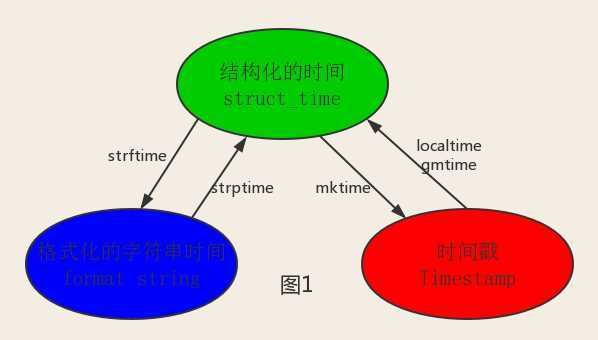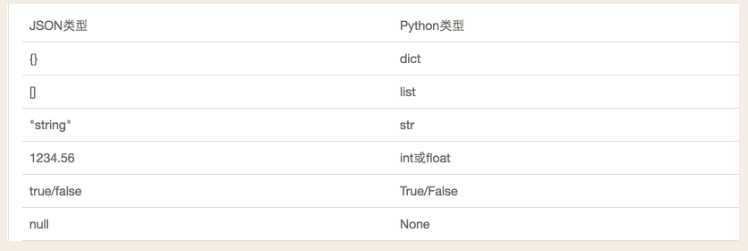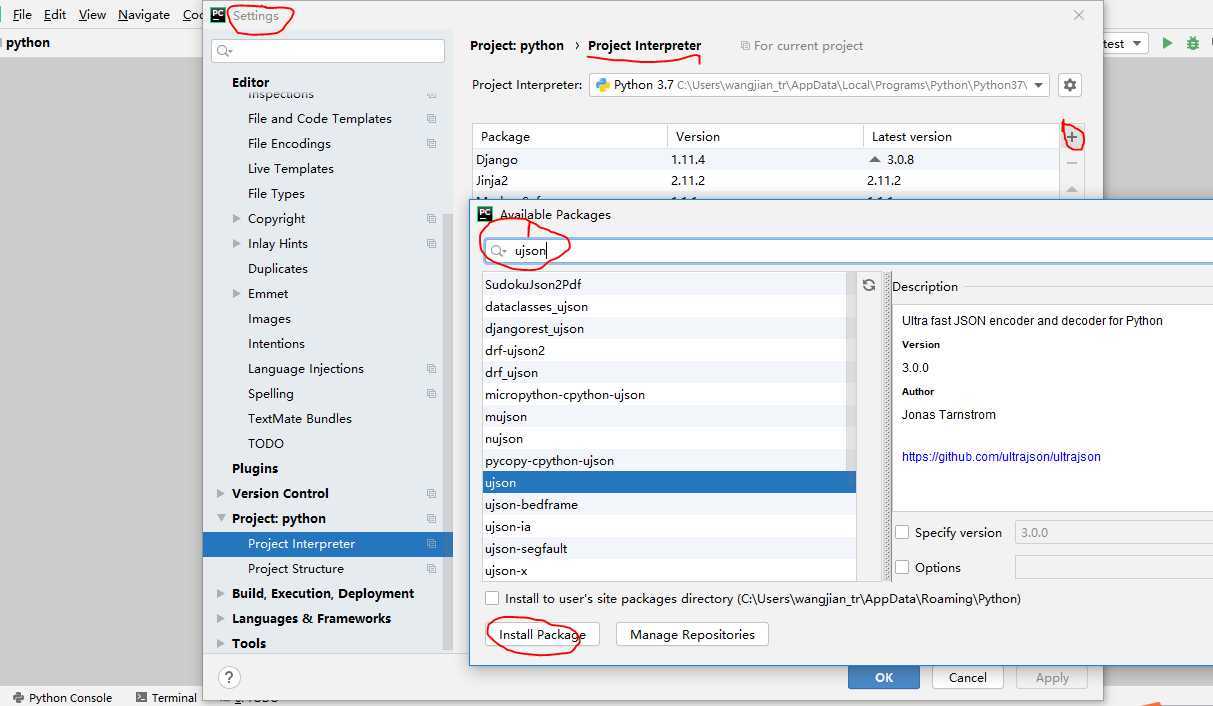https://www.cnblogs.com/linhaifeng/articles/6384466.html
# 时间模块优先掌握的操作: # 一: time import time # 时间分为三种格式: # 1. 时间戳: 从1970年到现在经过的秒数 # 作用: 用于时间间隔的计算 print(time.time()) # 结果: 1593429802.622998 # 2. 按照某种格式显示的时间: # 作用: 用于展示时间 print(time.strftime(‘%Y-%m-%d %H:%M:%S %p‘)) # 结果: 2020-06-29 19:26:55 PM print(time.strftime(‘%Y-%m-%d %X‘)) # 结果: 2020-06-29 19:26:55 # 3. 结构化时间 # 作用: 用于单独获取时间的某一部分 res = time.localtime() print(res) # 结果: time.struct_time(tm_year=2020, tm_mon=6, tm_mday=29, tm_hour=19, tm_min=33, tm_sec=5, tm_wday=0, tm_yday=181, tm_isdst=0) # 其中, tm_wday表示一周中的第几天, tm_yday表示一年中的第几天, tm_isdist表示夏令时 print(res.tm_year) # 结果: 2020
# 结构化时间中还有gmtime, 表示国际时间.
# 二: datetime import datetime res1 = datetime.datetime.now() print(res1) # 结果: 2020-06-29 20:02:09.299896 res2 = datetime.datetime.now() + datetime.timedelta(days=3) print(res2) # 结果: 2020-07-02 20:02:09.299896, 计算的是三天后的时间 res3 = datetime.datetime.now() + datetime.timedelta(days=-3) print(res3) # 结果: 2020-06-26 20:02:09.299896, 计算的是三天前的时间 res4 = datetime.datetime.now() - datetime.timedelta(days=3) print(res4) # 结果: 2020-06-26 20:02:09.299896, 计算的是三天前的时间 # 可以加减的有: days, seconds, microseconds, milliseconds, minutes, hours, weeks, 没有years.
# 时间模块需要掌握的操作 # 1. 时间格式的转换 # struct_time >>> timestamp import time print(time.mktime(time.localtime())) # 结果: 1593478596.0 # timestamp >>> struct_time print(time.localtime(time.time())) # 结果: time.struct_time(tm_year=2020, tm_mon=6, tm_mday=30, tm_hour=9, tm_min=0, tm_sec=11, tm_wday=1, tm_yday=182, tm_isdst=0) # 结构化时间包含两种, 一种是当地时间, 即localtime, 另一种是世界标准时间, 即gmtime. # 所以在timestamp转化为struc_time时, 也有两种方法, 一种是localtime, 另一种是gmtime. # sturct_time >>> format string print(time.strftime(‘%Y-%m-%d %H:%M:%S‘, time.localtime())) # 结果: 2020-06-30 09:12:53 # format string >>> struct_time print(time.strptime(‘2020-03-04 01:11:12‘, ‘%Y-%m-%d %H:%M:%S‘)) # 结果: time.struct_time(tm_year=2020, tm_mon=3, tm_mday=4, tm_hour=1, tm_min=11, tm_sec=12, tm_wday=2, tm_yday=64, tm_isdst=-1) # 真正需要掌握的只有一条: format string >>> struct_time >>> timestamp # 示例: 计算‘2020-6-30 09:28:00‘7天之后的时间 strftime = ‘2020-6-30 09:28:00‘ struct_time = time.strptime(strftime, ‘%Y-%m-%d %H:%M:%S‘) timestamp = time.mktime(struct_time) + 7*86400 new_struct_time = time.localtime(timestamp) new_strftime = time.strftime(‘%Y-%m-%d %H:%M:%S‘, new_struct_time) print(new_strftime) # 结果: 2020-07-07 09:28:00

import time time.sleep(3) #了解: print(time.asctime()) # 结果: Fri Jul 3 09:38:09 2020 # asctime()相当于strftime, 只不过不用再填写时间格式了. # 这种格式的时间在linux系统中比较常见. import datetime print(datetime.datetime.now()) # 结果: 2020-07-03 09:41:43.807904 print(datetime.datetime.utcnow()) # 世界标准时间 结果: 2020-07-03 01:41:43.857939 print(datetime.datetime.fromtimestamp(33333444)) # 将时间戳转化为时间的格式 结果: 1971-01-22 03:17:24
import time
t = time.time()
import datetime
t1 = datetime.datetime.fromtimestamp(t)
print(t1) # 结果: 2020-07-03 11:17:11.794048
1 import random 2 3 print(random.random())#(0,1)----float 大于0且小于1之间的小数 4 5 print(random.randint(1,3)) #[1,3] 大于等于1且小于等于3之间的整数 6 7 print(random.randrange(1,3)) #[1,3) 大于等于1且小于3之间的整数 8 9 print(random.choice([1,‘23‘,[4,5]]))#1或者23或者[4,5] 10 11 print(random.sample([1,‘23‘,[4,5]],2))#列表元素任意2个组合 12 13 print(random.uniform(1,3))#大于1小于3的小数,如1.927109612082716 14 15 16 item=[1,3,5,7,9] 17 random.shuffle(item) #打乱item的顺序,相当于"洗牌" 18 print(item)
# 随机生成6位验证码 import random def make_code(size=4): res = ‘‘ for i in range(6): s1 = chr(random.randint(65, 90)) s2 = chr(random.randint(97, 122)) d = str(random.randint(0,9)) res += random.choice([s1, s2, d]) return res code = make_code(6) print(code) # 注意: ord(‘a‘)可查看a对应的数字, chr(65)可以将数字65转化为字母a.
os.getcwd() 获取当前工作目录,即当前python脚本工作的目录路径 os.chdir("dirname") 改变当前脚本工作目录;相当于shell下cd os.curdir 返回当前目录: (‘.‘) os.pardir 获取当前目录的父目录字符串名:(‘..‘) os.makedirs(‘dirname1/dirname2‘) 可生成多层递归目录 os.removedirs(‘dirname1‘) 若目录为空,则删除,并递归到上一级目录,如若也为空,则删除,依此类推 os.mkdir(‘dirname‘) 生成单级目录;相当于shell中mkdir dirname os.rmdir(‘dirname‘) 删除单级空目录,若目录不为空则无法删除,报错;相当于shell中rmdir dirname os.listdir(‘dirname‘) 列出指定目录下的所有文件和子目录,包括隐藏文件,并以列表方式打印 os.remove() 删除一个文件 os.rename("oldname","newname") 重命名文件/目录 os.stat(‘path/filename‘) 获取文件/目录信息 os.sep 输出操作系统特定的路径分隔符,win下为"\\",Linux下为"/" os.linesep 输出当前平台使用的行终止符,win下为"\r\n",Linux下为"\n" os.pathsep 输出用于分割文件路径的字符串 win下为;,Linux下为: os.name 输出字符串指示当前使用平台。win->‘nt‘; Linux->‘posix‘ os.system("bash command") 运行shell命令,直接显示 os.environ 获取系统环境变量 os.path.abspath(path) 返回path规范化的绝对路径 os.path.split(path) 将path分割成目录和文件名二元组返回 os.path.dirname(path) 返回path的目录。其实就是os.path.split(path)的第一个元素 os.path.basename(path) 返回path最后的文件名。如何path以/或\结尾,那么就会返回空值。即os.path.split(path)的第二个元素 os.path.exists(path) 如果path存在,返回True;如果path不存在,返回False os.path.isabs(path) 如果path是绝对路径,返回True os.path.isfile(path) 如果path是一个存在的文件,返回True。否则返回False os.path.isdir(path) 如果path是一个存在的目录,则返回True。否则返回False os.path.join(path1[, path2[, ...]]) 将多个路径组合后返回,第一个绝对路径之前的参数将被忽略 os.path.getatime(path) 返回path所指向的文件或者目录的最后存取时间 os.path.getmtime(path) 返回path所指向的文件或者目录的最后修改时间 os.path.getsize(path) 返回path的大小
注意: 不要轻易执行删除操作. shift+delete会永久删除. linux系统中的rm命令轻易不要用.
在Linux和Mac平台上,该函数会原样返回path,在windows平台上会将路径中所有字符转换为小写,并将所有斜杠转换为饭斜杠。 >>> os.path.normcase(‘c:/windows\\system32\\‘) ‘c:\\windows\\system32\\‘ 规范化路径,如..和/ >>> os.path.normpath(‘c://windows\\System32\\../Temp/‘) ‘c:\\windows\\Temp‘ >>> a=‘/Users/jieli/test1/\\\a1/\\\\aa.py/../..‘ >>> print(os.path.normpath(a)) /Users/jieli/test1
os路径处理 #方式一:不推荐使用 import os #具体应用 import os,sys possible_topdir = os.path.normpath(os.path.join( os.path.abspath(__file__), os.pardir, #上一级 os.pardir, os.pardir )) sys.path.insert(0,possible_topdir) #方式二:推荐使用 os.path.dirname(os.path.dirname(os.path.dirname(os.path.abspath(__file__))))
# 课件笔记:
import os # 获取某一个文件夹下所有的子文件或子文件夹的名字 res1 = os.listdir(‘F:\python全栈开发\python\day22‘) print(res1) # 结果: [‘os模块.py‘, ‘random模块.py‘, ‘time与datatime模块.py‘] res2 = os.listdir(‘.‘) print(res2) # 结果: [‘os模块.py‘, ‘random模块.py‘, ‘time与datatime模块.py‘], .表示查看的是当前文件夹 print(os.environ) # 涉及到环境变量的有PATH, sys.path, os.environ, 其中, PATH供执行系统命令时使用, sys.path在导入模块时使用, os.environ是添加变量, 以供整个环境使用. # os.environ结果是字典, 且key和value都必须是字符串. 在添加变量时也要遵循这一原则. print(os.path.dirname(r‘F:\python全栈开发\python\day22‘)) # 结果: F:\python全栈开发\python print(os.path.basename(r‘F:\python全栈开发\python\day22‘)) # 结果: day22 print(os.path.isfile(r‘F:\python全栈开发\python\day22‘)) # 结果: False print(os.path.isfile(r‘F:\python全栈开发\python\day22\os模块.py‘)) # 结果: True print(os.path.isdir(r‘F:\python全栈开发\python\day22‘)) # 结果: True print(os.path.isdir(r‘F:\python全栈开发\python\day22\os模块.py‘)) # 结果: False print(os.path.join(‘a‘, ‘b‘, ‘c‘, ‘d‘)) # 结果: a\b\c\d print(os.path.join(‘a‘, ‘b‘, ‘c‘, ‘d‘)) # 结果: a\b\c\d print(os.path.getsize(r‘F:\python全栈开发\python\day22‘)) # 结果: 0 print(os.path.getsize(r‘F:\python全栈开发\python\day22\os模块.py‘)) # 结果: 1419 # 以后获取文件的上一级目录推荐使用以下方法: BASE_DIR = os.path.dirname(__file__) print(BASE_DIR) # 结果: F:/python全栈开发/python/day22 # python3.5以后, 推出了一个新的模块pathlib from pathlib import Path res = Path(__file__).parent.parent print(res) # 结果: F:\python全栈开发\python res1 = Path(r‘F:\python全栈开发\python\day22‘) / ‘a/e.txt‘ print(res1) # 结果: F:\python全栈开发\python\day22\a\e.txt, 用于路径拼接
1 sys.argv 命令行参数List,第一个元素是程序本身路径 2 sys.exit(n) 退出程序,正常退出时exit(0) 3 sys.version 获取Python解释程序的版本信息 4 sys.maxint 最大的Int值 5 sys.path 返回模块的搜索路径,初始化时使用PYTHONPATH环境变量的值 6 sys.platform 返回操作系统平台名称 # 重点是: sys.argv和sys.path
打印进度条
...
引言:
需求: 将bool值True写入到文件中.
如果预先不将True转化为字符串, 直接使用write进行写入, 则会报错, 且用t/b模式写都会报错:
with open(‘a‘, mode=‘w‘, encoding=‘utf-8‘) as f: f.write(True) TypeError: write() argument must be str, not bool
with open(‘a‘, mode=‘wb‘) as f:
f.write(True.encode(‘utf-8‘))
# AttributeError: ‘bool‘ object has no attribute ‘encode‘
提示write()中的参数必须是字符串类型. 那么如果想把bool, list, dict, tuple, int, float, set类型的数据存到硬盘上, 则必须先将其转化为str类型的数据, 然后再写入.
当然, 从硬盘中读取出来的数据也是字符串类型, 这就需要将字符串类型的数据转化为数据原来的类型.
土方法(str+eval):
# str()可以将其他数据类型转化为str类型, eval()可以将str类型还原回原来的类型
with open(‘a‘, mode=‘w‘, encoding=‘utf-8‘) as f: f.write(str(22)+‘\n‘) f.write(str(22.2)+‘\n‘) f.write(str([1, 2, ‘中国‘])+‘\n‘) f.write(str({‘name‘: ‘小明‘})+‘\n‘) f.write(str((22.2, ‘啊啊‘))+‘\n‘) f.write(str({1, ‘bb‘})+‘\n‘) f.write(str(True)+‘\n‘) with open(‘a‘, mode=‘r‘, encoding=‘utf-8‘) as f: for line in f: line = eval(line) print(line, type(line)) ‘‘‘ 结果: 22 <class ‘int‘> 22.2 <class ‘float‘> [1, 2, ‘中国‘] <class ‘list‘> {‘name‘: ‘小明‘} <class ‘dict‘> (22.2, ‘啊啊‘) <class ‘tuple‘> {1, ‘bb‘} <class ‘set‘> True <class ‘bool‘> ‘‘‘
1. 什么是序列化和反序列化
序列化指的是把内存的数据类型转换成一个特定的格式的内容, 该格式的内容可用于存储或传输给其他平台使用
内存中的数据类型----->序列化----->特定的格式(jason格式或pickle格式)
内存中的数据类型<-----反序列化<-----特定的格式(jason格式或pickle格式)
土办法:
文本文件中只能存储字符串, 对于像字典类型的数据, 如果想永久存储起来, 则需要先转化为字符串
{‘aa‘:11}----->序列化str({‘aa‘:11})----->‘{‘aa‘:11}‘
{‘aa‘:11}<-----反序列化eval({‘aa‘:11})<-----‘{‘aa‘:11}‘
2. 为何要序列化
序列化得到的特定格式的内容有两种用途
1. 可用于存储=>用于存档, 仅供自己的程序使用
2. 可用于传输给其他平台使用=>跨平台数据交互, 供其他语言使用
python java
列表 特定的格式 数组
强调:
针对用途1的特定格式: 可以是一种专用的格式, 即pickle, 只有python可以识别,
当然也可以jason进行, 但是有局限性, 因为json不适用于所有的数据类型, 例如不适用于集合
(TypeError: Object of type set is not JSON serializable)
针对用途2的特定格式: 应该是一种通用, 能够被所有语言识别的格式, 即jason格式

# json的使用
import json with open(‘a‘, mode=‘w‘, encoding=‘utf-8‘) as f: f.write(json.dumps(1)+‘\n‘) f.write(json.dumps(1.111)+‘\n‘) f.write(json.dumps(True)+‘\n‘) f.write(json.dumps(False)+‘\n‘) f.write(json.dumps(‘中国‘)+‘\n‘) f.write(json.dumps([1, ‘中国‘])+‘\n‘) f.write(json.dumps((1, False))+‘\n‘) # tuple类型不会报错. 但是使用loads反转出来是list类型. f.write(json.dumps({‘name‘: ‘小明‘})+‘\n‘) # f.write(json.dumps({1, True})+‘\n‘) # set类型会报错. TypeError: Object of type set is not JSON serializable with open(‘a‘, mode=‘r‘, encoding=‘utf-8‘) as f: for line in f: # print(type(line)) # 结果: <class ‘str‘> res = json.loads(line) print(res, type(res)) ‘‘‘ 结果: 1 <class ‘int‘> 1.111 <class ‘float‘> True <class ‘bool‘> False <class ‘bool‘> 中国 <class ‘str‘> [1, ‘中国‘] <class ‘list‘> [1, False] <class ‘list‘> {‘name‘: ‘小明‘} <class ‘dict‘> ‘‘‘
为确保中文字符的正常显示, 需要用到ensure_ascii = False
import json
r1 = json.dumps([1, 2, True, ‘中国‘])
print(r1) # 结果: [1, 2, true, "\u4e2d\u56fd"]
r2 = json.dumps([1, 2, True, ‘中国‘], ensure_ascii=False)
print(r2) # 结果: [1, 2, true, "中国"]
# pickle的使用 import pickle with open(‘a‘, mode=‘wb‘) as f: f.write(pickle.dumps(1)+‘\n‘.encode(‘utf-8‘)) f.write(pickle.dumps(1.111)+‘\n‘.encode(‘utf-8‘)) f.write(pickle.dumps(True)+‘\n‘.encode(‘utf-8‘)) f.write(pickle.dumps(False)+‘\n‘.encode(‘utf-8‘)) f.write(pickle.dumps(‘中国‘)+‘\n‘.encode(‘utf-8‘)) f.write(pickle.dumps([1, ‘中国‘])+‘\n‘.encode(‘utf-8‘)) f.write(pickle.dumps((1, False))+‘\n‘.encode(‘utf-8‘)) # tuple类型可以正常转换. f.write(pickle.dumps({‘name‘: ‘小明‘})+‘\n‘.encode(‘utf-8‘)) f.write(pickle.dumps({1, ‘aaa‘})+‘\n‘.encode(‘utf-8‘)) # 报错:_pickle.UnpicklingError: pickle data was truncated with open(‘a‘, mode=‘rb‘) as f: for line in f: # print(type(line)) # 结果: <class ‘str‘> res = pickle.loads(line) print(res, type(res)) ‘‘‘ 结果: 1 <class ‘int‘> 1.111 <class ‘float‘> True <class ‘bool‘> False <class ‘bool‘> 中国 <class ‘str‘> [1, ‘中国‘] <class ‘list‘> (1, False) <class ‘tuple‘> {‘name‘: ‘小明‘} <class ‘dict‘> ‘‘‘
综上, 可以看出, jason和pickle都无法正常转换集合, json会将元祖反转成列表, pickle可以将元祖反转成元祖.
import json # 序列化 res3 = json.dumps([1, 1.33, ‘a‘, True, False]) print(res3, type(res3)) # 结果: [1, 1.33, "a", true, false] <class ‘str‘> # 反序列化 res4 = json.loads(res3) print(res4, type(res4)) # 结果: [1, 1.33, ‘a‘, True, False] <class ‘list‘> # 将序列化结果写入文件的复杂方法 res1 = json.dumps(True) print(res1, type(res1)) # 结果: true <class ‘str‘> with open(‘test1.json‘, mode=‘w‘, encoding=‘utf-8‘) as f: f.write(res1) # 注意: 使用json文件, 通常不会重复写, 只是写一次. # 从文件读取json格式的字符串进行反序列化操作的复杂方法 with open(‘test1.json‘, mode=‘r‘, encoding=‘utf-8‘) as f: res11=f.read() print(res11, type(res11)) # 结果: true <class ‘str‘> res111 = json.loads(res11) print(res111, type(res111)) # 结果: True <class ‘bool‘> # 将序列化的结果写入文件的简单方法 with open(‘test2.json‘, mode=‘w‘, encoding=‘utf-8‘) as f: json.dump([1, 1.33, ‘a‘, True, False], f) # 从文件读取json格式的字符串进行反序列化操作的简单方法 with open(‘test2.json‘, mode=‘r‘, encoding=‘utf-8‘) as f: res5 = json.load(f) print(res5, type(res5)) # 结果: [1, 1.33, ‘a‘, True, False] <class ‘list‘> # 注意: json格式兼容的是所有语言通用的数据类型, 不能识别某一语言所独有的类型 # json强调: json中字符串使用的是双引号, 没有单引号. res6 = json.loads(‘[1, 1.33, "a", true, false]‘) print(res6, type(res6)) # 结果: [1, 1.33, ‘a‘, True, False] <class ‘list‘> res7 = json.loads(b‘[1, 1.33, "a", true, false]‘) print(res7, type(res7)) # 结果: [1, 1.33, ‘a‘, True, False] <class ‘list‘> # 在python解释器2.7与3.6之后都可以json.loads(bytes类型),但唯独3.5不可以 # 在python2中, str就是bytes.
注意:通常, 一个json文件放一个对象. 如果想多放对象, 应该在外边套个列表.
pickle模块的用法同json模块
import pickle res8 = pickle.dumps({1, 2, 3, 4}) print(res8, type(res8)) # 结果: b‘\x80\x03cbuiltins\nset\nq\x00]q\x01(K\x01K\x02K\x03K\x04e\x85q\x02Rq\x03.‘ <class ‘bytes‘> res9 = pickle.loads(res8) print(res9, type(res9)) # 结果: {1, 2, 3, 4} <class ‘set‘>
# 如果集合中含有bool, 转化的过程中bool会丢失.
# 了解: pickle中作用的是中文, 如果在python3中进行了pickle的dump序列化操作, 产生的结果想要在python2中进行反序列化, # 则在python3中进行dump操作时, 需要指定protoco=2
import pickle with open(‘a‘, mode=‘wb‘) as f: pickle.dump([‘a‘, 1, True], f) with open(‘a‘, mode=‘rb‘) as f: r = pickle.load(f) print(r, type(r)) # 结果[‘a‘, 1, True] <class ‘list‘>
python2与pyhon3的pickle兼容问题:
# coding:utf-8 import pickle with open(‘a.pkl‘,mode=‘wb‘) as f: # 一:在python3中执行的序列化操作如何兼容python2 # python2不支持protocol>2,默认python3中protocol=4 # 所以在python3中dump操作应该指定protocol=2 pickle.dump(‘你好啊‘,f,protocol=2) with open(‘a.pkl‘, mode=‘rb‘) as f: # 二:python2中反序列化才能正常使用 res=pickle.load(f) print(res)os路径处理
#方式一:推荐使用 import os #具体应用 import os,sys possible_topdir = os.path.normpath(os.path.join( os.path.abspath(__file__), os.pardir, #上一级 os.pardir, os.pardir )) sys.path.insert(0,possible_topdir) #方式二:不推荐使用 os.path.dirname(os.path.dirname(os.path.dirname(os.path.abspath(__file__))))
如果在使用别人的模块时, 发现别人的模块不是很完美, 需要对使用的模块进行改进完善, 则叫做打补丁.
如果文件好多处都导入了该模块, 应该在首次导入的位置进行打补丁, 后续导入的直接引用内存结果, 都会跟着改变, 就是在运行文件打补丁.
扩展:
有一种模块叫ujson, 它比json的效率更高.
可以通过两种方式进行安装:
方式一:
pip3 install ujson
方式二:

ujson的用法和json一样, ujson的效率更高.
# 一.什么是猴子补丁? 猴子补丁的核心就是用自己的代码替换所用模块的源代码,详细地如下 1,这个词原来为Guerrilla Patch,杂牌军、游击队,说明这部分不是原装的,在英文里guerilla发音和gorllia(猩猩)相似,再后来就写了monkey(猴子)。 2,还有一种解释是说由于这种方式将原来的代码弄乱了(messing with it),在英文里叫monkeying about(顽皮的),所以叫做Monkey Patch。 # 二. 猴子补丁的功能(一切皆对象) 1.拥有在模块运行时替换的功能, 例如: 一个函数对象赋值给另外一个函数对象(把函数原本的执行的功能给替换了) class Monkey: def hello(self): print(‘hello‘) def world(self): print(‘world‘) def other_func(): print("from other_func") monkey = Monkey() monkey.hello = monkey.world monkey.hello() monkey.world = other_func monkey.world() # 三.monkey patch的应用场景 如果我们的程序中已经基于json模块编写了大量代码了,发现有一个模块ujson比它性能更高, 但用法一样,我们肯定不会想所有的代码都换成ujson.dumps或者ujson.loads,那我们可能 会想到这么做 import ujson as json,但是这么做的需要每个文件都重新导入一下,维护成本依然很高 此时我们就可以用到猴子补丁了 只需要在入口处加上 , 只需要在入口加上: import json import ujson def monkey_patch_json(): json.__name__ = ‘ujson‘ # 此处可以不写 json.dumps = ujson.dumps json.loads = ujson.loads monkey_patch_json() # 之所以在入口处加,是因为模块在导入一次后,后续的导入便直接引用第一次的成果 #其实这种场景也比较多, 比如我们引用团队通用库里的一个模块, 又想丰富模块的功能, 除了继承之外也可以考虑用Monkey Patch.采用猴子补丁之后,如果发现ujson不符合预期,那也可以快速撤掉补丁。个人感觉Monkey Patch带了便利的同时也有搞乱源代码的风险!
xml是实现不同语言或程序之间进行数据交换的协议,跟json差不多,但json使用起来更简单,不过,古时候,在json还没诞生的黑暗年代,大家只能选择用xml呀,至今很多传统公司如金融行业的很多系统的接口还主要是xml。
xml的格式如下,就是通过<>节点来区别数据结构的:
<?xml version="1.0"?> <data> <country name="Liechtenstein"> <rank updated="yes">2</rank> <year>2008</year> <gdppc>141100</gdppc> <neighbor name="Austria" direction="E"/> <neighbor name="Switzerland" direction="W"/> </country> <country name="Singapore"> <rank updated="yes">5</rank> <year>2011</year> <gdppc>59900</gdppc> <neighbor name="Malaysia" direction="N"/> </country> <country name="Panama"> <rank updated="yes">69</rank> <year>2011</year> <gdppc>13600</gdppc> <neighbor name="Costa Rica" direction="W"/> <neighbor name="Colombia" direction="E"/> </country> </data>
xml协议在各个语言里的都 是支持的,在python中可以用以下模块操作xml:
# print(root.iter(‘year‘)) #全文搜索 # print(root.find(‘country‘)) #在root的子节点找,只找一个 # print(root.findall(‘country‘)) #在root的子节点找,找所有
import xml.etree.ElementTree as ET tree = ET.parse("xmltest.xml") root = tree.getroot() print(root.tag) #遍历xml文档 for child in root: print(‘========>‘,child.tag,child.attrib,child.attrib[‘name‘]) for i in child: print(i.tag,i.attrib,i.text) #只遍历year 节点 for node in root.iter(‘year‘): print(node.tag,node.text) #--------------------------------------- import xml.etree.ElementTree as ET tree = ET.parse("xmltest.xml") root = tree.getroot() #修改 for node in root.iter(‘year‘): new_year=int(node.text)+1 node.text=str(new_year) node.set(‘updated‘,‘yes‘) node.set(‘version‘,‘1.0‘) tree.write(‘test.xml‘) #删除node for country in root.findall(‘country‘): rank = int(country.find(‘rank‘).text) if rank > 50: root.remove(country) tree.write(‘output.xml‘) 复制代码 复制代码 #在country内添加(append)节点year2 import xml.etree.ElementTree as ET tree = ET.parse("a.xml") root=tree.getroot() for country in root.findall(‘country‘): for year in country.findall(‘year‘): if int(year.text) > 2000: year2=ET.Element(‘year2‘) year2.text=‘新年‘ year2.attrib={‘update‘:‘yes‘} country.append(year2) #往country节点下添加子节点 tree.write(‘a.xml.swap‘)
自己创建xml文档:
import xml.etree.ElementTree as ET new_xml = ET.Element("namelist") name = ET.SubElement(new_xml,"name",attrib={"enrolled":"yes"}) age = ET.SubElement(name,"age",attrib={"checked":"no"}) sex = ET.SubElement(name,"sex") sex.text = ‘33‘ name2 = ET.SubElement(new_xml,"name",attrib={"enrolled":"no"}) age = ET.SubElement(name2,"age") age.text = ‘19‘ et = ET.ElementTree(new_xml) #生成文档对象 et.write("test.xml", encoding="utf-8",xml_declaration=True) ET.dump(new_xml) #打印生成的格式
shelve模块比pickle模块简单,只有一个open函数,返回类似字典的对象,可读可写;key必须为字符串,而值可以是python所支持的数据类型
import shelve f=shelve.open(r‘sheve.txt‘) # f[‘stu1_info‘]={‘name‘:‘egon‘,‘age‘:18,‘hobby‘:[‘piao‘,‘smoking‘,‘drinking‘]} # f[‘stu2_info‘]={‘name‘:‘gangdan‘,‘age‘:53} # f[‘school_info‘]={‘website‘:‘http://www.pypy.org‘,‘city‘:‘beijing‘} print(f[‘stu1_info‘][‘hobby‘]) f.close()
在python3中采用configparser的格式, 在python2中采用ConfigParser的格式
作用: 用来加载某种特定格式的配置文件
原文:https://www.cnblogs.com/libyan/p/13210173.html